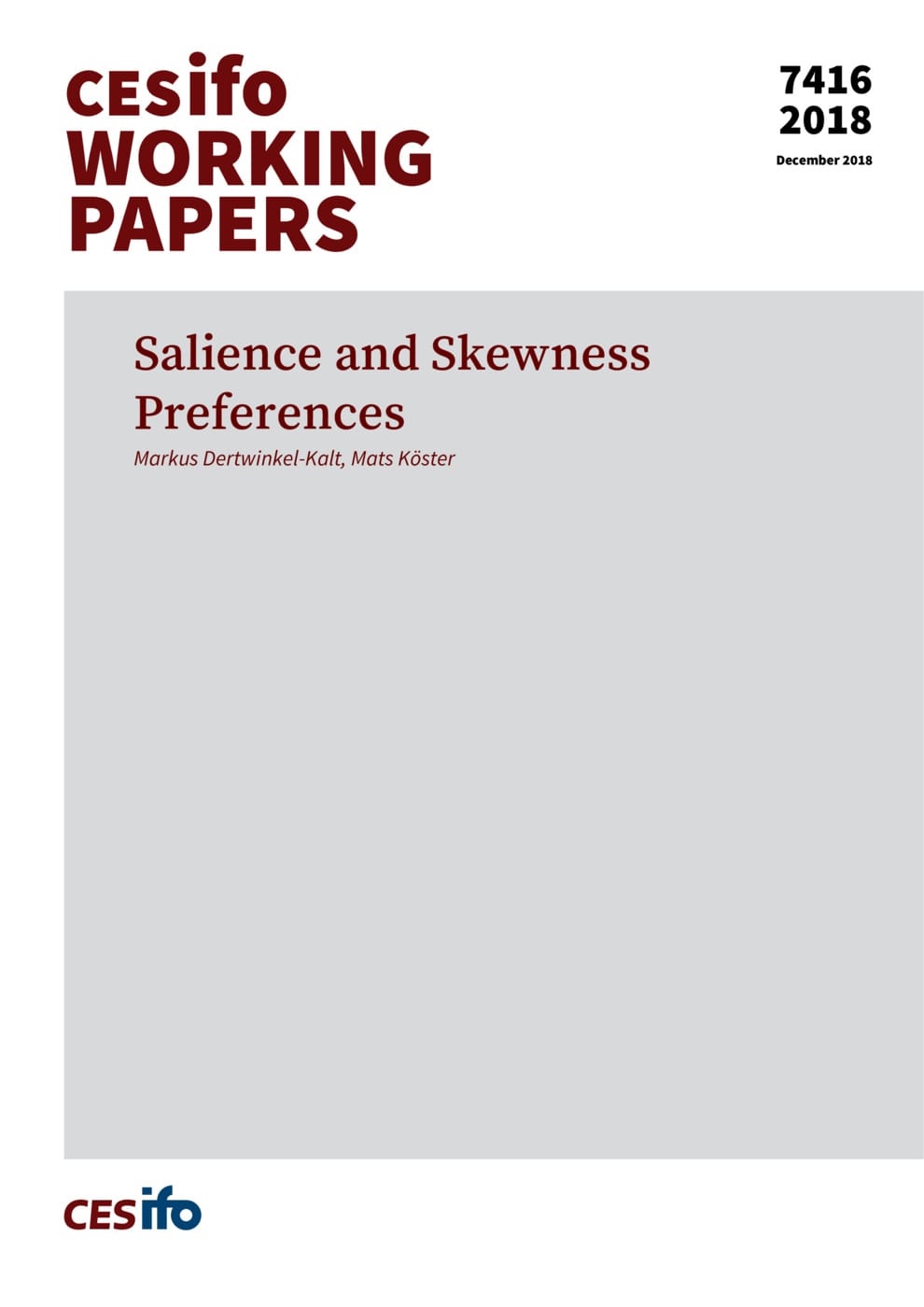Salience and Skewness Preferences
CESifo, Munich, 2018
CESifo Working Paper No. 7416

Whether people seek or avoid risks on gambling, insurance, asset, or labor markets crucially depends on the skewness of the underlying probability distribution. In fact, people typically seek positively skewed risks and avoid negatively skewed risks. We show that salience theory of choice under risk can explain this preference for positive skewness, because unlikely, but outstanding payoffs attract attention. In contrast to alternative models, however, salience theory predicts that choices under risk not only depend on the absolute skewness of the available options, but also on how skewed these options appear to be relative to each other. We exploit this fact to derive novel, experimentally testable predictions that are unique to the salience model and that we find support for in two laboratory experiments. We thereby argue that skewness preferences—typically attributed to cumulative prospect theory—are more naturally accommodated by salience theory.
Empirical and Theoretical Methods
Behavioural Economics